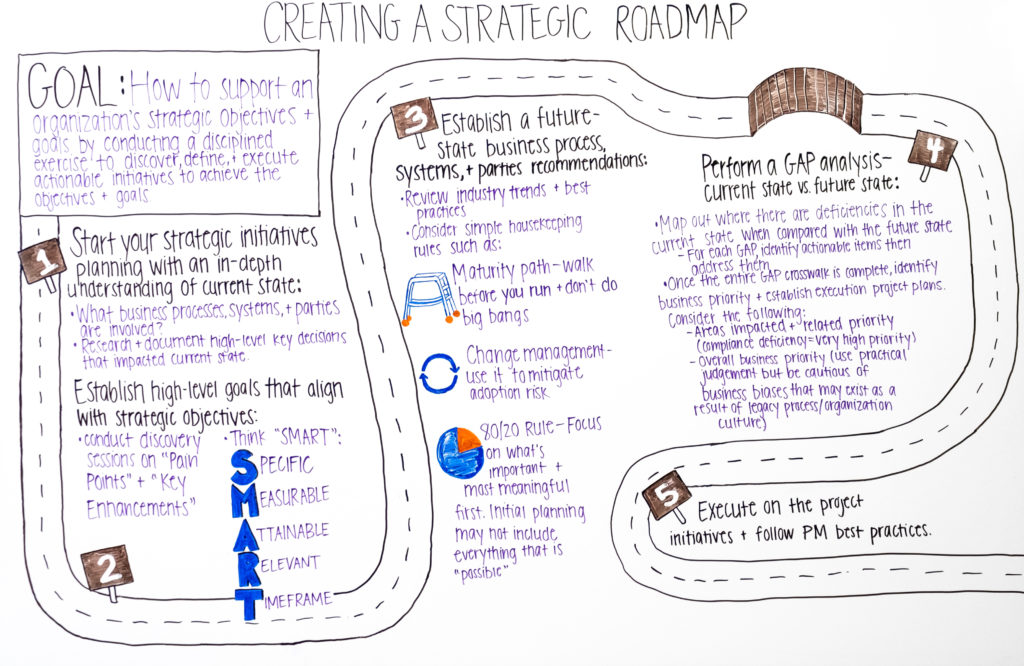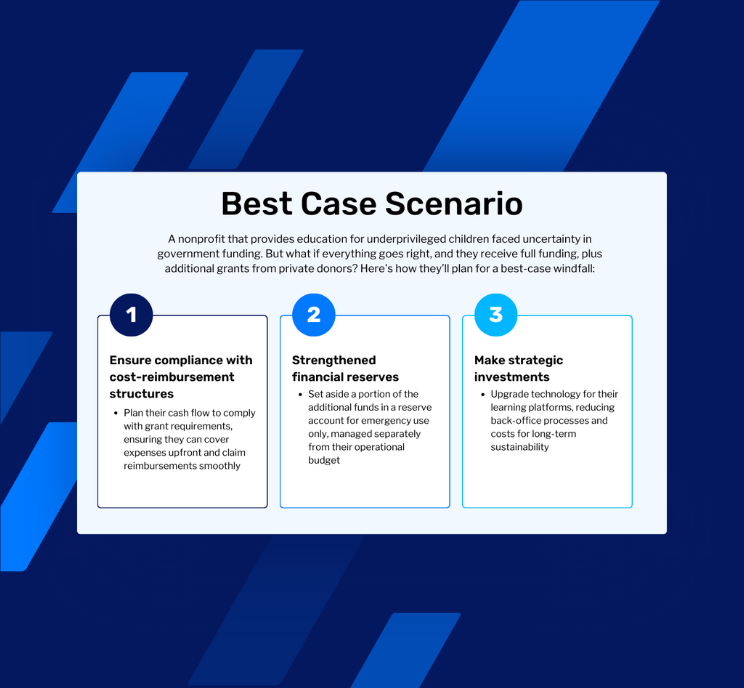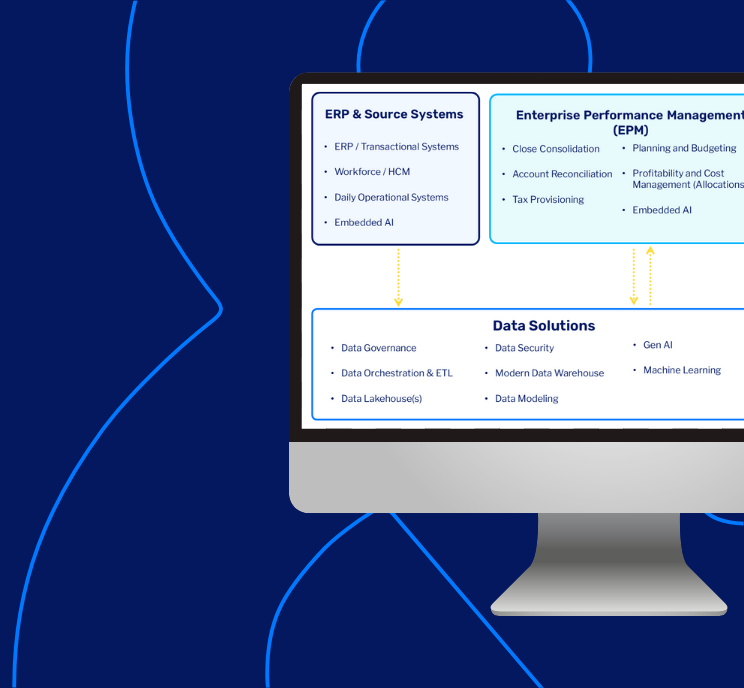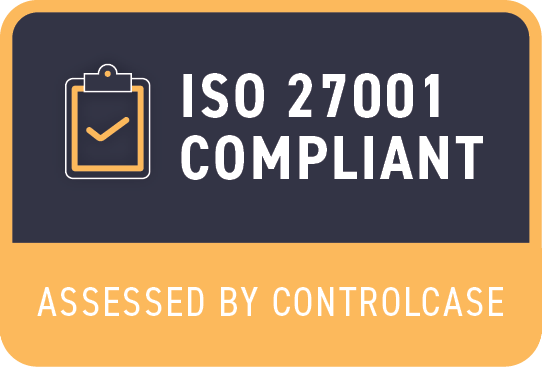Want to Speak Live with Pritpal?
- Phone: 410-988-1355
- Email: pkalsi@schgroup.com

Video Transcription
Hello and welcome to another strategic Whiteboard video series by SC&H. And today I’m going to be talking about how to create a strategic roadmap to support your business transformations. As a way of introduction My name is Pritpal Kalsi. I’ve been advising the office of the CFO for finance transformations for the past 15 years and as I’ve been doing this a couple of things that I’ve come to appreciate. Most commonly that when you start executing on no matter how big or small the plans are reality is always way more complex than anything you can anticipate while you’re planning.
In addition, recognize that when you’re talking about transformations, you’re really talking about changing your processes and change is a common theme that’s involved there, and change is very hard to adopt. So, change management is always a key component of your planning. So, as I talk about creating a strategic roadmap with this nice infographic behind me in my pink shirt and my scarf keep in mind some fundamental ground rules as you go through it so that you can ensure success. So, the objective is simply to call I’ll call it follow best practices to accommodate your business transformations.
What do you start from a business transformation with one of the things I tell everyone is well first and foremost you’ve got to understand what you’re starting with? So, what your current state processes are and as you’re thinking about what you have as a current say process think about not necessarily what your processes are but why they are what they are. Because very often people take everything from face value they assume because they may have introduced to something that already existed and they just sort of adopted knowing that that’s the normal function of business as it is. But when you’re thinking about transformations it’s very important to understand why those processes were meant to be the way they are.
Was it a limitation of systems at the time was it a limitation of your organization’s ability to support more complex processes? Once you understand those, I’ll call it reasons behind what your processes are you’re going to have invaluable information that you need to keep in mind as you start outlining the execution plan and vision for the future. So, once you have that appreciation make sure you’re doing it in a disciplined fashion and you’re documenting those processes so that you can always reference back to it as a discipline. Once you understand the current state processes and why they are the way they are you can then unleash your creative thought process and you can bring in your innovative team you can bring in your stakeholders you can bring in your end users that are going to be impacted by this business transformation and really start conversations about setting the vision for what the to-be future state processes ought to be right.
And in this process, you’re not necessarily going to hold yourself back from what you used to. You’re going to try to stay away from any biases from current state processes and you’re really going to start looking at what the organization needs from its strategic objective standpoint and some fundamental rules to keep in mind as you set that vision for the future. Bring in expertise if you have to expertise that specializes in this piece that you’re trying to transform. So, for my expertise as the Office of the CFO finance and accounting transformations you would look to someone like me who specialized in that area within your industry to come in and provide you with the best practice in the state of the industry to help you set that vision but more importantly you will have internal stakeholders that understand your business your market better than anyone else and you would have those parties involved in that conversation for setting the future state vision as well. A couple of things to keep in mind tried to look at the next three to five years as you’re setting this vision not too far out not too short term because if you set yourself from a planning perspective thinking about what you want to do for the next 10-15 years you might be thinking too far out and planning for things that are going to be redundant by the time you actually get there.
So focus on that three to five year window and don’t make it too short term because if that’s the thing that’s more tactical that’s strategic we want you to challenge yourself to think beyond what the status quo and what’s easily possible and really looking to things that are going to be supportive of your vision. So, once you have the vision and you understand the processes what do you do from there?
Well that’s really where you get into some of the best practices on building a plan that you can then execute on as you’re building the plans, once again some key things to keep in mind. I talked about change and change being hard. Remember your organization will have the ability to adopt change at a different level than others because depending on how many times you’ve done transformations how many times you’ve subjected your business process and users to adopt new processes will kind of dictate how much they can adopt change on a go forward basis. So, as you think about new processes and build plans, recognize a few different things recognize where you have the major gaps and focus on things that are more important to the business.
So, an auto deficiency takes a higher party than let’s say a cool dashboard that’s valuable and important and you may want as part of your transformation but not necessarily before you address that auto deficiency. That’s a component that you should be building into your execution plans. And another thing to keep in mind is when you’re when you’re executing on plans, you’re asking your organization to change and adopt change and their ability to adopt change may vary so follow the path of what I call maturity. There’s a nice infographic like a walker and slow yourself down because like I said things are always more complex and even as you keep this planning in mind and try to keep things simple reality will make everything more complex.
But keep in mind if you’re persistent if you have disciplined conversations to continue to march towards where you’re trying to get to. Slowly but surely through path of maturity you will be able to accommodate full maturity to the transformations that you’re trying to accommodate. Couple of other things that are best practices as I’ve been doing this for 15 years that I’ve come to appreciate is more often than not folks when they embark on strategic initiatives start looking at everything in absolutes and they start accommodating things along the lines of look, yesterday our organization was this, in the future we wanted to be x y z so let’s go accommodate everything we need to do to get there and they quote unquote start doing things in absolutes and in the big bang approach one thing I will tell you those always fail. Reason for that is because your organization and human ability to adapt change is natural and we learn and change in increments.
So big bangs never work. Don’t try to cheat the system. It never works. Follow what I will call is the 80/20 rule which is once you understand what it is that you’re trying to do as their first priority on your path to maturity you’re focusing on things that address 80 to 90 percent of your needs because the complexity is going to lie in that 20 to 10 percent. That is something that you want to accommodate but something that you should try to accommodate later in the process was this right from the get-go. Once you understand your current state processes you have a better appreciation of the vision of what the organization needs from the next three to five years.
You have plans to execute you can then formulate I’ll call it best practices from an execution standpoint and execute on that plan. Follow your PM best practices but as you do that remember a few different things that we’ve mentioned as part of this video. Anticipate curveballs because they’re going to happen and anticipate in reality your simple plans that may have accommodated a lot of subject to change as you go through it are going to continue to need to change because you’re going to learn things as you execute the plan that you wouldn’t have been able to anticipate when you first built those plans.
So be flexible be agile assume change so that when change happens when you’re going through your plan, you’re able to anticipate it react to it mitigate it as best as possible but not be surprised by it. If this was helpful please contact myself or one of my team members from the contact information that’s on the page below and we would love to explore more ideas and thoughts on how SC&H and my team has helped organizations just like yourself go through pretty holistic transformations whether those be transformations around data analytics whether those be transformations around office of the CFO for finance or accounting we’d love to engage in those conversations and see where we can be helpful. Thank you.





